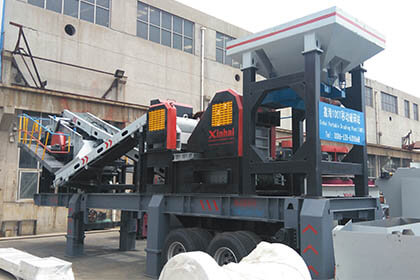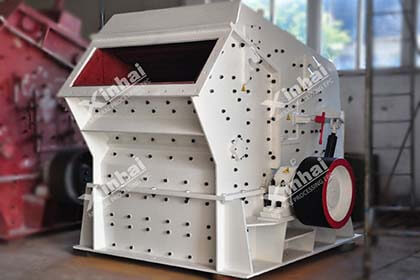The Definitive Guide to Bentonite
 Chileen Gao
Chileen Gao
 Feb 23, 2023
Feb 23, 2023
 1151
1151
If you want to know more details about equipment, solutions, etc, please click the button below for free consultation, or leave your requirements!

(bentonite processing equipment)
The main component of bentonite is montmorillonite. Due to its unique structure and chemical properties, it has good adsorptive, catalytic and adhesive properties and is used in a wide range of industrial, agricultural and medical applications.
Bentonite in nature is not very pure and usually needs to be separated and purified before it can be utilised. This article describes the nature of bentonite, its physical properties, areas of application, methods of mineral processing and purification as well as common mineral processing equipment.
01Introduction to Bentonite
BackBentonite is a claystone with montmorillonite as the main mineral component, a layered hydrous aluminosilicate mineral containing small amounts of alkali and alkaline earth metals.
Bentonite is often associated with illite, kaolinite, zeolite, feldspar and calcite and other minerals, generally white, grey, pink, yellow, brown-black and other colours; with greasy, waxy lustre; fracture shell-shaped or serrated; its form is often earthy cryptocrystalline masses, sometimes small scale-like, spherical; Mohs hardness 2-2.5; density 2-2.7g/cm3; soft and slippery. Water absorption and swelling.
02The Physical Properties of Bentonite
BackMoisture absorption
Absorbs 8 to 15 times its own volume of water.
Water absorption and swelling
Volume swells several times to 30 times.
Dispersion and suspension
Dispersible in aqueous media as a colloidal suspension.
Viscosity, thixotropy and lubricity
Plasticity and adhesiveness in admixtures with water, mud or sand and other fine crumbly substances.
Ion-exchange and adsorption capacity
Strong cation exchange capacity as well as adsorption capacity.
Large specific surface area
Up to 800m2/g.
03Applications of Bentonite
Back
Bentonite and its processed products have excellent process properties, such as dispersion and suspension, thixotropy, rheology, adsorption, wettability, plasticity, adhesion, cation exchange, etc., can be used as a binder, suspending agent, thixotropic agent, plasticizer, thickener, lubricant, flocculant, stabilizer, catalyst carrier, purification and decolorization agent, clarifier, filler, adsorbent, chemical carrier, etc., widely used in petroleum, chemical, metallurgy, casting, construction, plastics, rubber, paint and coating, light industry, environmental protection, agriculture, etc.
Polymer intercalation and in situ polymerisation using montmorillonite layered crystal structures and interlayer nano-scale is one of the main methods for the preparation of high strength and high performance nano-plastics or nano-polymers and has good prospects for development.
Although bentonite has a wide range of uses, it is currently the most dominant and most used in three areas: metallurgy, foundry and drilling mud, accounting for about 70% of the total bentonite usage.
04Separation and Purification Methods for Bentonite
BackThe separation and purification methods for bentonite can be divided into three types, namely picking, wind separation and wet separation.
Picking
Picking is mainly used for bentonite with a high montmorillonite content in the raw ore. Picking is generally carried out at the mining site, where the waste rock is manually separated out from the ore. It can also be divided into lots and layers of mining according to the technical requirements of the application area, stacked separately and processed individually. Currently, manual picking is mostly used in China and the process is as follows.
In the first step, the large bentonite ore is crushed to about 20mm, soft bentonite does not need to be crushed.
The second step is to dry the ore so that the moisture is reduced to below 6%-12%. It can be heated and dried, or dried naturally, or dried by passing hot air into the mill to dehydrate it in the grinding powder.
The third step is manual picking, where waste stones above 20mm are picked out by hand during the drying process, or some mines use vibrating sieves to screen out large pieces larger than 20mm. The fourth step is grinding, usually using Raymond mill, the product fineness is generally 200 mesh.
Wind Separation
Wind sorting is a common purification method used at home and abroad. The general grade is greater than 70%.
The principle process of windrowing is as follows.
Drying is generally carried out in two stages, first the ore is stacked on the stockpile for natural drying, so that the moisture of the raw ore is reduced from 40% to below 25%, and then coarse crushing is carried out, and the size of the crushed product is 30-40mm.
The crushed product is further dried, generally using hot air drying and fluidised drying. The drying equipment used is mainly fluidised dryer, rotary shutter dryer, flash dryer, rotary dryer, etc. The drying temperature is generally controlled below 250°C and the product moisture is controlled at less than 6% to 12%. Too high drying temperature or too long drying time will affect the product quality and even lose the gumminess.
Grinding is generally done by Raymond mill and the fineness of the product depends on the user's requirements, generally 100-325 mesh.
After grinding, the product is graded and de-sanded by a cyclone classifier or impeller classifier, and then the final product is obtained.
Wet Separation
To obtain high purity bentonite or bentonite, and to develop the use of bentonite content of 30% to 60% of the low-grade bentonite resources, to use wet separation or wet purification process.
Wet purification process of bentonite.
The original bentonite crushed to less than 5mm, add water and stir into a concentration of about 25% of the slurry, and then use the spiral classifier, hydrocyclone or other hydraulic classifier to separate the coarse size of sand and carbonate minerals, the remaining suspension into the high-speed rotating centrifugal sink separator, such as horizontal spiral discharge settling centrifuge or centrifugal concentrator, further separation of fine-grained carbonate and quartz, feldspar and other Impurities, to obtain particle size of less than 5μm, the expansion factor of more than 20 high-purity montmorillonite or bentonite slurry or suspension, this slurry will be filtered, dried and broken up after depolymerisation that is to obtain high-purity bentonite products.
Centrifugal separation of the sediment in addition to a small number of fine-grained carbonates and feldspar and other impurities, but also contains bentonite can meet the requirements of the production of active white clay, so it can be mixed with higher purity bentonite production of active white clay.
05Common Bentonite Processing Equipment
BackJaw Crusher
The Jaw Crusher is a high capacity, high crushing ratio and high crushing efficiency crusher, mainly used for coarse crushing.
The Jaw Crusher is a deep cavity crusher with an optimised design for high crushing performance, high jaw speed and curved jaw plate design for high production capacity.

(jaw crusher for bentonite rocessing and dressing)
Raymond Mill
This is a complete set of Raymond mill that can stand on its own as a production system.
It has a unique air self-circulation system with advanced dust collector, which carries the concept of environmental protection to the end. The grinding roller assembly is linked by a tie rod and a high pressure spring, and the force generated avoids the loss of large pieces of materials to the equipment. The elastic coupling of the main machine and the powder selector reduces vibration and noise, and improves the service life of the equipment.

(raymond mill for bentonite separation)
Hydrocyclone
This is an involute direction feeding hydrocyclone, this involute feeding port is conducive to increasing the centrifugal force of the material, improving the classification effect and greatly reducing the wear and tear of the feed box.

(hydrocyclone for bentonite purification)
06Summary
Back
Bentonite is an extremely valuable, multi-purpose non-metallic minerals, enjoy the "universal" clay called. Whether the use of dry or wet purification, will be accompanied by a large number of tailings produced, which not only reduces the utilization of resources, but also cause serious environmental problems, so strengthen the comprehensive utilization of bentonite tailings and resource utilization is particularly important. Welcome to click the chat button for more information about bentonite processing.
 +86 18716000713
+86 18716000713 xlyin@xinhaimining.net
xlyin@xinhaimining.net




 Message
Message Chat Now
Chat Now


















